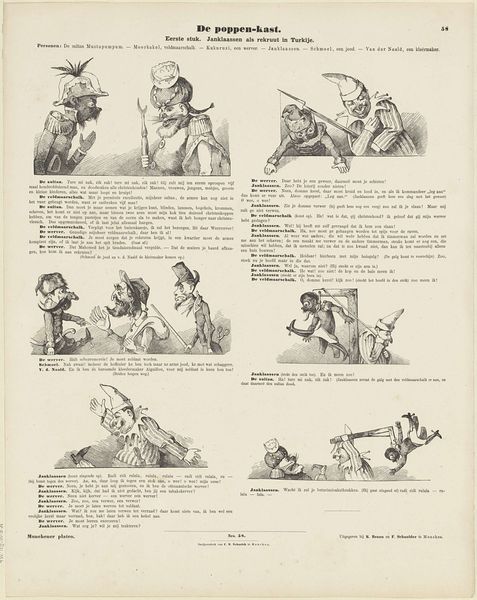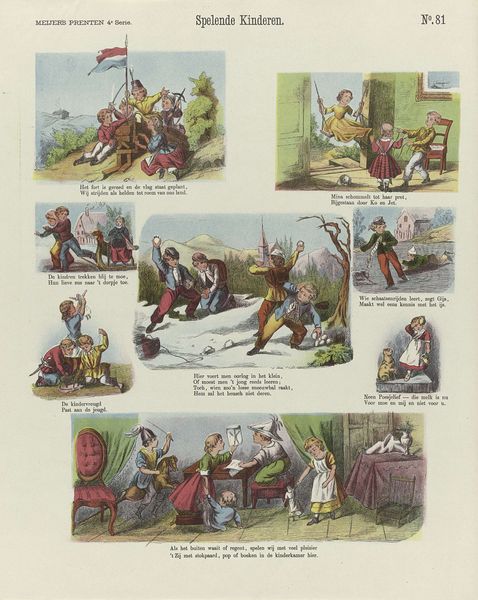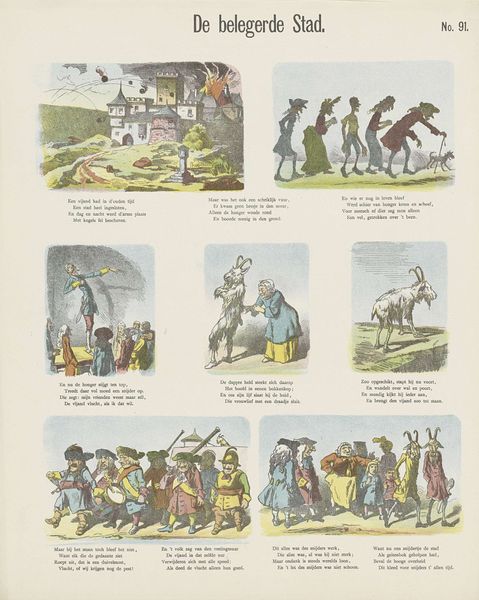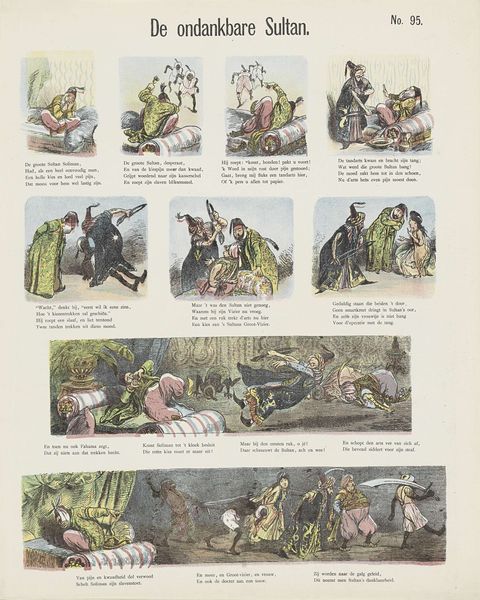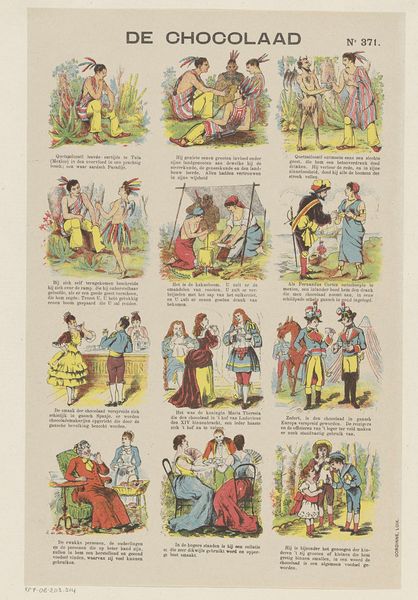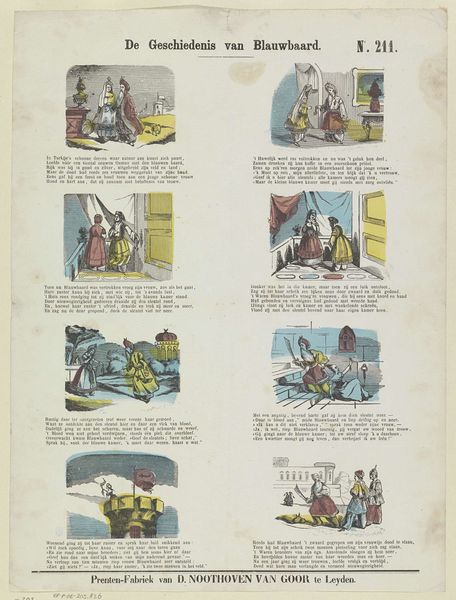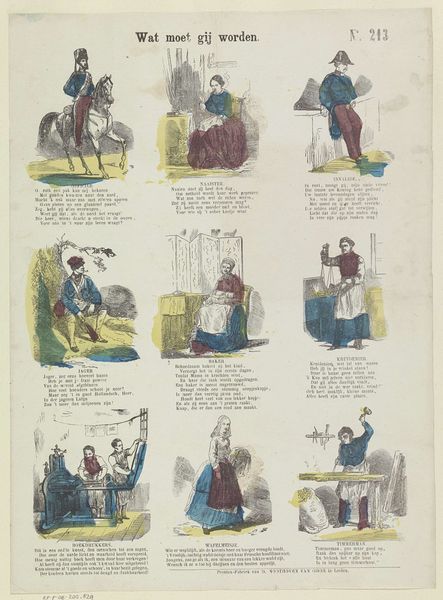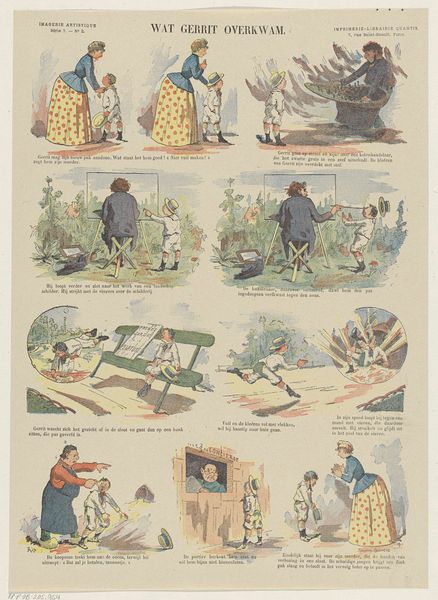
De poppen-kast / Derde stuk: De vrouw van Janklaassen en de keukenmeid c. 1843 - 1920
0:00
0:00
graphic-art, print
#
graphic-art
#
narrative-art
# print
#
caricature
#
watercolour illustration
#
genre-painting
Dimensions: height 441 mm, width 353 mm
Copyright: Rijks Museum: Open Domain
This print, titled "De poppen-kast," was made by C. Reinhardt, using lithography, a printing process that democratized image production. Lithography relies on the mutual repulsion of grease and water. The artist draws on a stone or metal plate with a greasy crayon, then applies water. Ink adheres only to the greasy areas, allowing for multiple impressions. In this case, Reinhardt has also used hand-applied color to highlight details. The result is a series of vignettes, each a small stage for social commentary. The very nature of lithography—its capacity for mass production—speaks to a changing world, one in which images are no longer unique treasures but widely distributed commodities. Consider how this print, made accessible through its medium, brings narratives and characters to a broad audience, reflecting and shaping public opinion. It's a fascinating interplay between art, technology, and society.
Comments
No comments
Be the first to comment and join the conversation on the ultimate creative platform.
